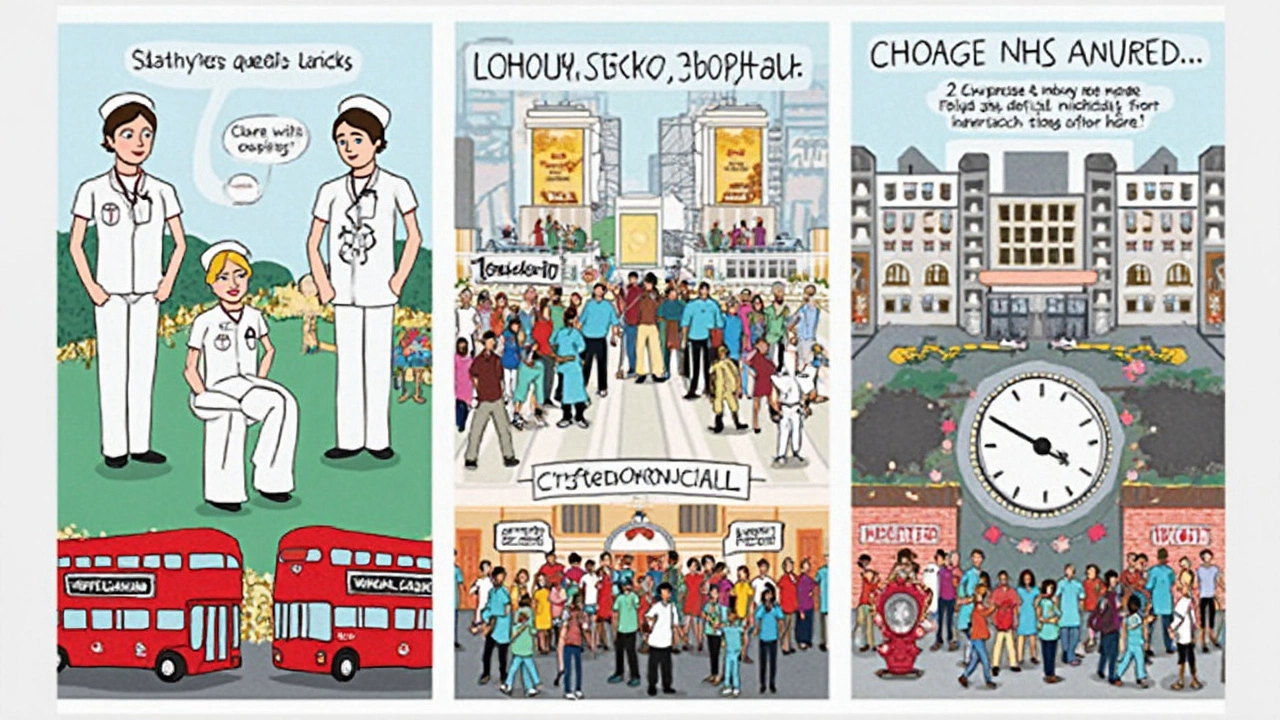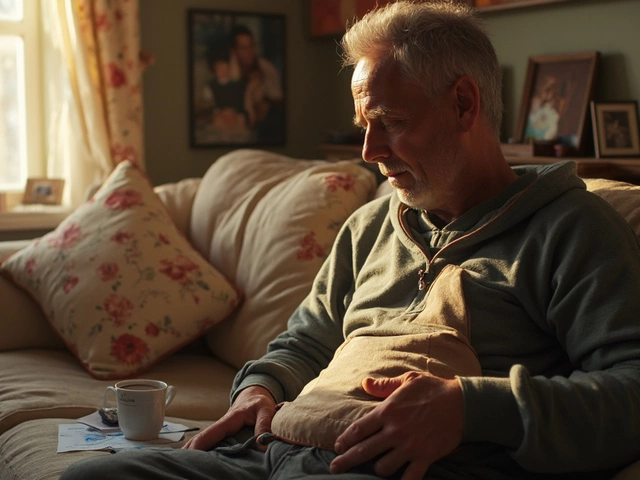Staring at a letter that says your NHS appointment is still months away? You’re not alone. NHS waiting times have reached record highs—over 7.5 million people in England are currently on a hospital waiting list. That’s nearly one in seven people across the country!
This isn’t just about a nuisance or a last-minute reshuffle, either. People waiting for scans, surgeries, and even urgent cancer referrals are often left in the dark. Knowing why things have gotten this bad might help you feel less powerless and more prepared to handle the wait. There are real reasons for these delays, and knowing them can help you make smarter choices while you wait your turn.
- The Backlog Nobody Saw Coming
- Staff Shortages and Burnout
- How Funding Shapes The Wait
- High Demand, Low Supply
- What You Can Do While You Wait
- Are Solutions Actually Working?
The Backlog Nobody Saw Coming
Think the NHS waiting list problem happened overnight? Not quite. It actually snowballed—fast—when COVID-19 hit. Hospitals had to pause thousands of regular appointments and routine surgeries just to keep up with urgent pandemic cases. By December 2021, the number of people stuck on the waiting list for treatment jumped past six million in England, a number that just didn’t exist before.
Even now, a big chunk of that pandemic backlog is still there. Here’s a quick look at just how steep the backlog got:
| Year | People on NHS Waiting List (England) |
|---|---|
| 2019 (Pre-pandemic) | About 4.4 million |
| 2021 (After COVID-19 delays) | 6.2 million |
| 2024 | Over 7.5 million |
What makes it tougher is that it’s not just about numbers, it’s about time. Some people are now waiting over a year for hospital treatments. Just a few years ago, the NHS aimed for a maximum 18-week wait. Now, more than 380,000 people have been waiting over a year. That’s enough to fill Wembley Stadium more than four times.
"We know that waiting for treatment can be distressing and we’re working around the clock to reduce backlogs caused by the pandemic." – NHS England spokesperson, BBC News, July 2023
These huge NHS waiting times aren’t just down to COVID-19, but the pandemic made a bad problem worse, fast. And when thousands of appointments pile up, even small delays get magnified. It’s a domino effect—if you’re bumped back just a little, it pushes the next person even further.
- If you’re waiting, check online for up-to-date stats on local waiting times. Trusts have to publish this info now.
- Stay in regular contact with your GP, especially if things get worse while you wait. Don’t just wait quietly.
Everyone’s feeling the pinch here, and the reality is, this backlog didn’t come out of nowhere—but it isn’t fading anytime soon, either.
Staff Shortages and Burnout
This might sound obvious, but the NHS simply doesn’t have enough staff to keep up with everyone who needs help. Over 120,000 NHS jobs in England are unfilled, and about 40,000 of those are nursing roles. Think about that for a second: every missing nurse means longer waits and more stress for those who are still working.
The pressure on the workers left behind is huge. More than half of NHS staff surveyed in 2024 said they felt worn out because of their workload. Many are leaving early or cutting back their hours just to cope, so the shortage problem gets worse and worse. It’s like a never-ending cycle—fewer staff means more work for everyone else, which pushes more people to the breaking point.
If you’re wondering what’s causing the shortage, it’s a mix of reasons. Pay hasn’t kept up with inflation, so some staff look for better pay in other jobs or even outside the UK. Training new doctors and nurses takes years, and Brexit made it harder for skilled people from the EU to help fill the gaps.
| Year | Vacancies in NHS England |
|---|---|
| 2019 | ~94,000 |
| 2022 | ~105,000 |
| 2024 | ~120,000 |
By now, staff burnout is ringing alarm bells at every level. If you’re waiting months just to get a hospital appointment, that’s why. The fewer people there are on shift, the slower the system moves. And that’s a big, stubborn reason why NHS waiting times just won’t budge.
How Funding Shapes The Wait
Let’s talk about the elephant in the room—money. NHS waiting times are getting longer partly because the cash just isn’t keeping up with what patients need. NHS budgets in England rose a bit over the past few years, but not nearly enough to match growing demand or modern health costs.
Think about it: the NHS budget for 2024/25 is around £165 billion. That sounds huge until you look at what it’s actually supposed to cover—everything from hip replacements to mental health services and GP visits. In the last decade, funding increases have barely kept pace with inflation, and that shortfall means tough choices for managers in every hospital.
Here’s how the numbers break down in a way that actually affects you:
- When funding is tight, hospitals hire fewer staff or freeze hiring. So fewer doctors and nurses around means longer waits.
- Outdated buildings and old equipment often go without upgrades, so certain treatments are slower or done elsewhere, adding delays.
- Each winter, money gets shifted to cover emergencies like flu surges, leaving less for routine appointments or planned surgeries.
- After Covid, emergency funds dried up, but the extra backlog stayed. This means waitlists keep growing even when pandemic chaos has gone.
NHS trusts often have to decide: spend on urgent cases or shrinking the NHS waiting times list? There’s only so much to go around before something has to give.
| Year | NHS Budget (£ billion) | Waiting List Size (millions) |
|---|---|---|
| 2020 | £150 | 4.4 |
| 2022 | £160 | 6.2 |
| 2024 | £165 | 7.5 |
The facts are stark: More money doesn’t always mean shorter waits, but flat budgets with rising demand pretty much guarantee longer queues. If you’re waiting, knowing how funding works helps explain why reminders and phone calls don’t magically shift things along. It’s not just about your place on the list—it’s a system under pressure from top to bottom.

High Demand, Low Supply
The NHS is a lifeline for millions, but right now it’s a system that’s stretched past its limit. Every year, more people need care. The UK population keeps getting older, and that means more chronic illnesses and higher demand for everything from hip replacements to cancer treatment. Add to that the lingering effects of the pandemic—thousands of missed appointments, unchecked health problems piling up—and you’ve got a recipe for crisis.
But demand is only half of the problem. The supply side isn’t keeping up. Not enough doctors, nurses, or scanners. Fewer hospital beds than in the past. Many GPs are overwhelmed, sometimes handling over 50 patient contacts per day. Even though the NHS puts out regular targets and tries to recruit, these efforts are often playing catch-up.
Check out how some core resources have changed:
| Resource | 2019 | 2024 |
|---|---|---|
| NHS Hospital Beds (England) | 127,000 | 104,000 |
| Patient Referrals (per month) | 1.7 million | 2.2 million |
| Registered Nurses (England) | 310,000 | 317,000 |
So you can see, while patient numbers have jumped, extra beds and staff have barely budged. That’s why NHS waiting times are spiraling. Gaps get filled with temporary staff or canceled clinics. Some routine treatment now means waiting 18 weeks, and the 2-week urgent cancer referral isn’t hit for one out of every three patients.
- More people are living longer, often with complicated health needs.
- Not enough staff and facilities are added to match rising demand.
- Pandemic-driven backlogs haven’t disappeared—they’re still clogging the system.
If you’re stuck waiting, it’s not because anyone forgot about you. The whole system is straining just to keep up, and right now, high demand is outpacing anything the NHS can supply.
What You Can Do While You Wait
Long NHS waiting times are stressful, but there are ways to make things a little easier. Taking small steps now can help you stay on top of your health and maybe even speed up how quickly you’re seen. Here’s what actually helps while you’re stuck in limbo:
- Keep your GP in the loop: If your symptoms change or get worse, let your doctor know. They can update your referral and, in some cases, bump you up the waiting list.
- Chase up your appointment: Call the hospital’s booking office every couple of weeks. Cancellations happen all the time, and if you’re flexible, you might snag an earlier slot.
- Stay organised: Keep all your NHS letters and appointment details in one place. If the hospital contacts you out of the blue, you’ll have everything at hand.
- Look into local options: Some areas now have ‘one stop clinics’ or expanded GP services for basic scans or checks. Ask if your area does this; sometimes you can be seen faster locally.
- Explore self-referral: For things like physiotherapy or mental health counselling, you often don’t need a GP referral—check your local NHS website.
Staff across the NHS face huge pressure. As one hospital trust manager told the BBC last month,
“We are working flat out with fewer staff and higher demand. Patients who keep their contact details up to date and ring in to check for cancellations often find they can be seen sooner.”
Let’s look at the numbers on what people are actually waiting for:
| Type of NHS Service | Average Waiting Time (weeks) | Number Waiting (England, 2025) |
|---|---|---|
| Consultant-led Treatment | 17.8 | 7,560,000 |
| MRI Scan | 14.5 | 846,000 |
| First Cancer Appointment | 2.1 | 241,000 |
| Routine Surgery (e.g., hip/knee) | 31.2 | 442,000 |
If you can, keep your phone on and check your email often. Hospitals sometimes offer last-minute appointments, especially if someone else must cancel. Finally, don’t be afraid to ask for written confirmation on anything you’re told over the phone. Mistakes do happen, especially when everyone’s stretched. Staying proactive is your best bet for shaving a bit off that mega wait.
Are Solutions Actually Working?
The NHS has rolled out a bunch of plans to tackle this mountain-sized waiting list, but are things really improving? It’s a mixed bag. Let’s look at what's been tried—and what the numbers say.
One of the biggest pushes has been the use of extra clinics on weekends and evenings. This ‘NHS Elective Recovery Plan’ aims to whip through routine surgeries like hip replacements and cataract ops faster. Sounds good, right? Problem is, by May 2025, experts say a lot of these slots haven’t even been filled, mostly because there aren’t enough doctors and nurses to actually run them.
Private hospitals have stepped in. The NHS has bought extra capacity from private providers, so some people get called up for an operation at a private clinic, even though it’s still free on the NHS. In 2024, over 16% of all NHS *planned* treatments were carried out at private hospitals, up from about 10% before the pandemic.
The NHS waiting times themselves tell the story. Check out these stats for elective (planned) care in England:
| Year | Patients Waiting (Millions) | Waiting 18+ Weeks (%) | Median Wait Time (Weeks) |
|---|---|---|---|
| 2019 | 4.4 | 15% | 7 |
| 2022 | 6.1 | 34% | 13 |
| 2024 | 7.5 | 44% | 15 |
So, the numbers are still going in the wrong direction. Speeding up a few operations here and there helps, but it hasn’t dented the huge backlog—yet.
- Some hospitals are trying techy fixes, like using digital systems to juggle appointments or sharing electronic records between practices. This can cut admin delays but takes ages to roll out everywhere.
- Virtual appointments have made GP and outpatient slots simpler, but not every appointment can go online—especially not surgery.
- The government recently promised another 700 million pounds investment to expand beds and operating theatres, but building new capacity takes time—usually years, not months.
Right now, the reality is simple: more people keep needing treatment, and the fixes aren’t keeping up. So if you’re stuck in the queue, you’re not missing out on some magic trick—most folks are still waiting, just like you.




